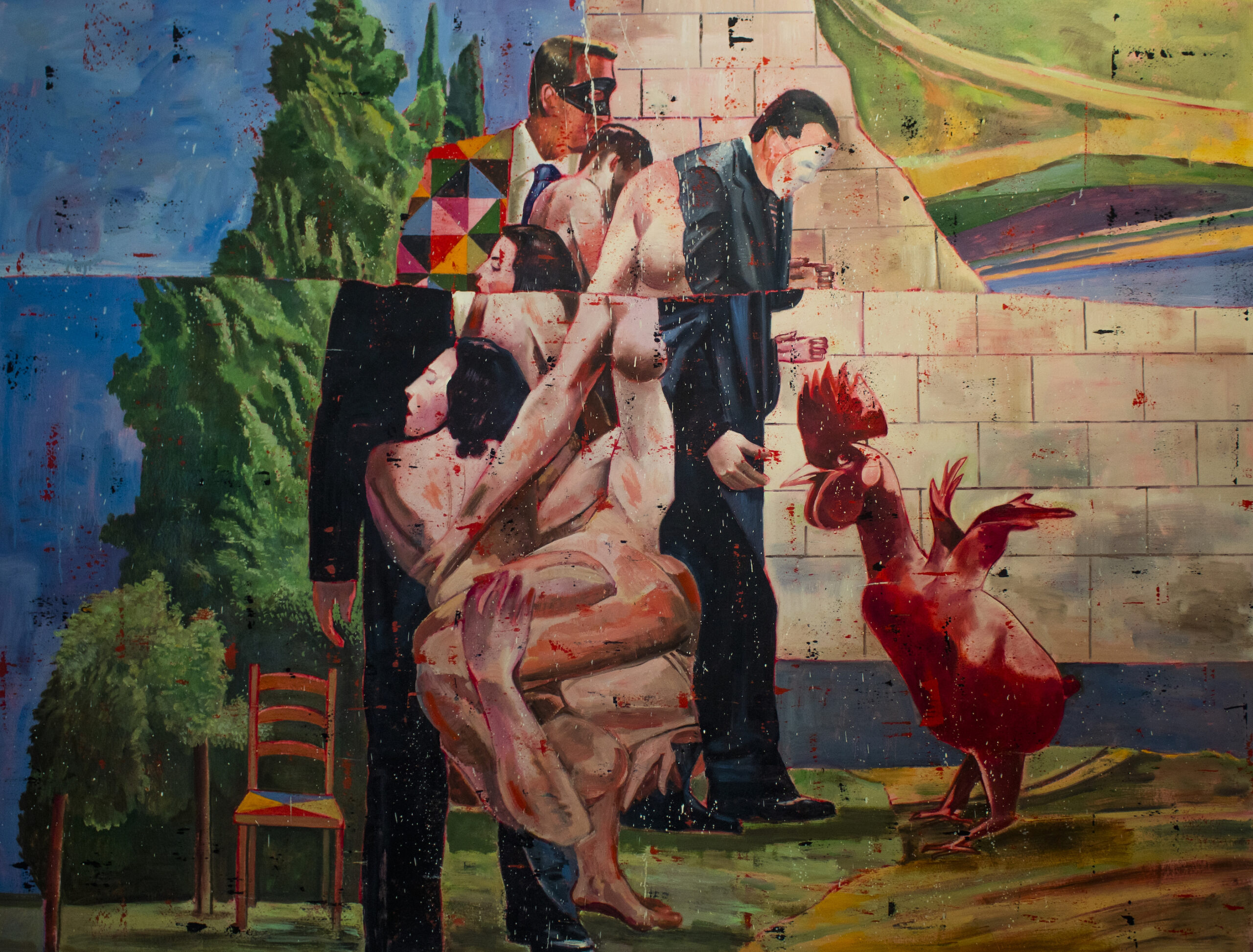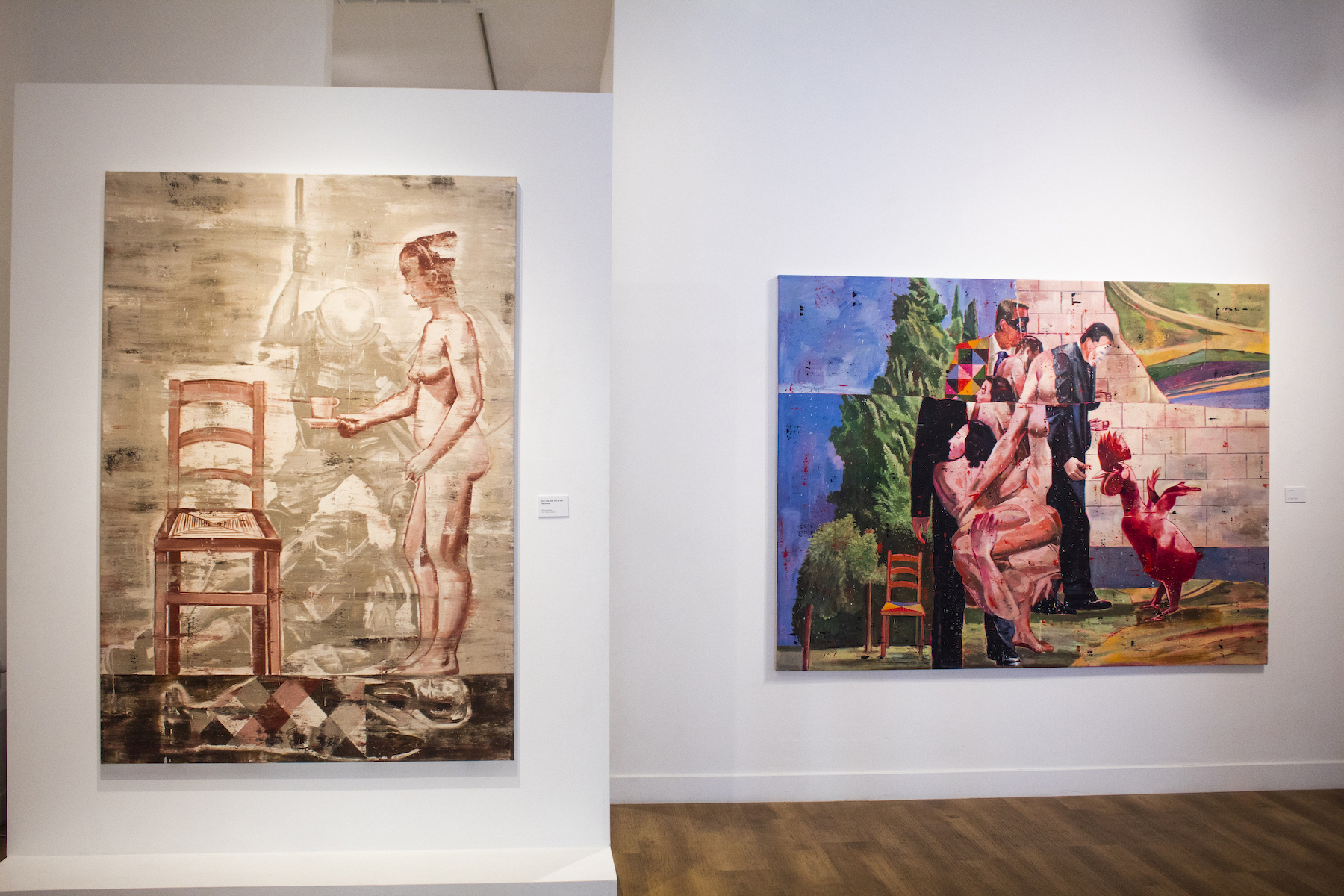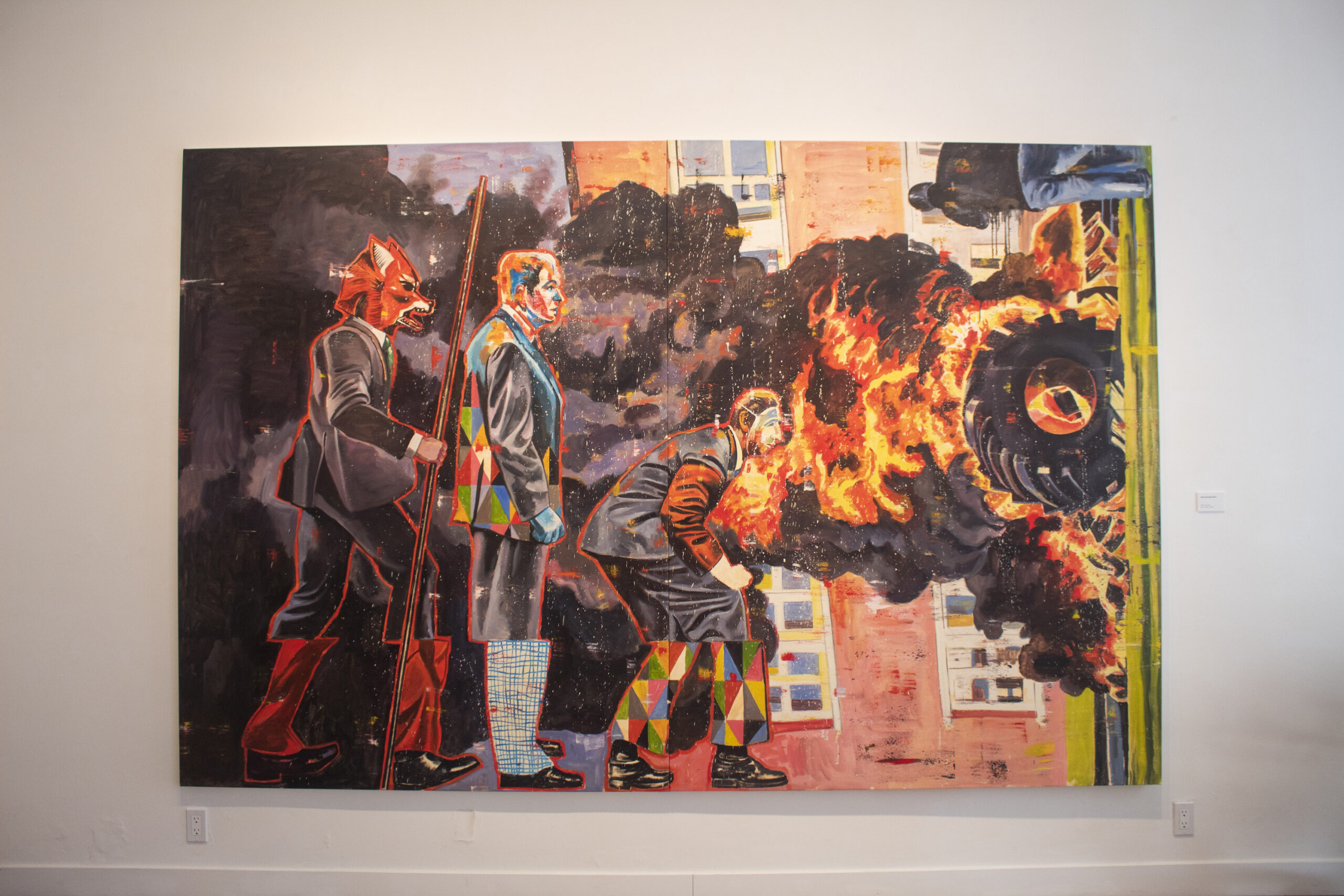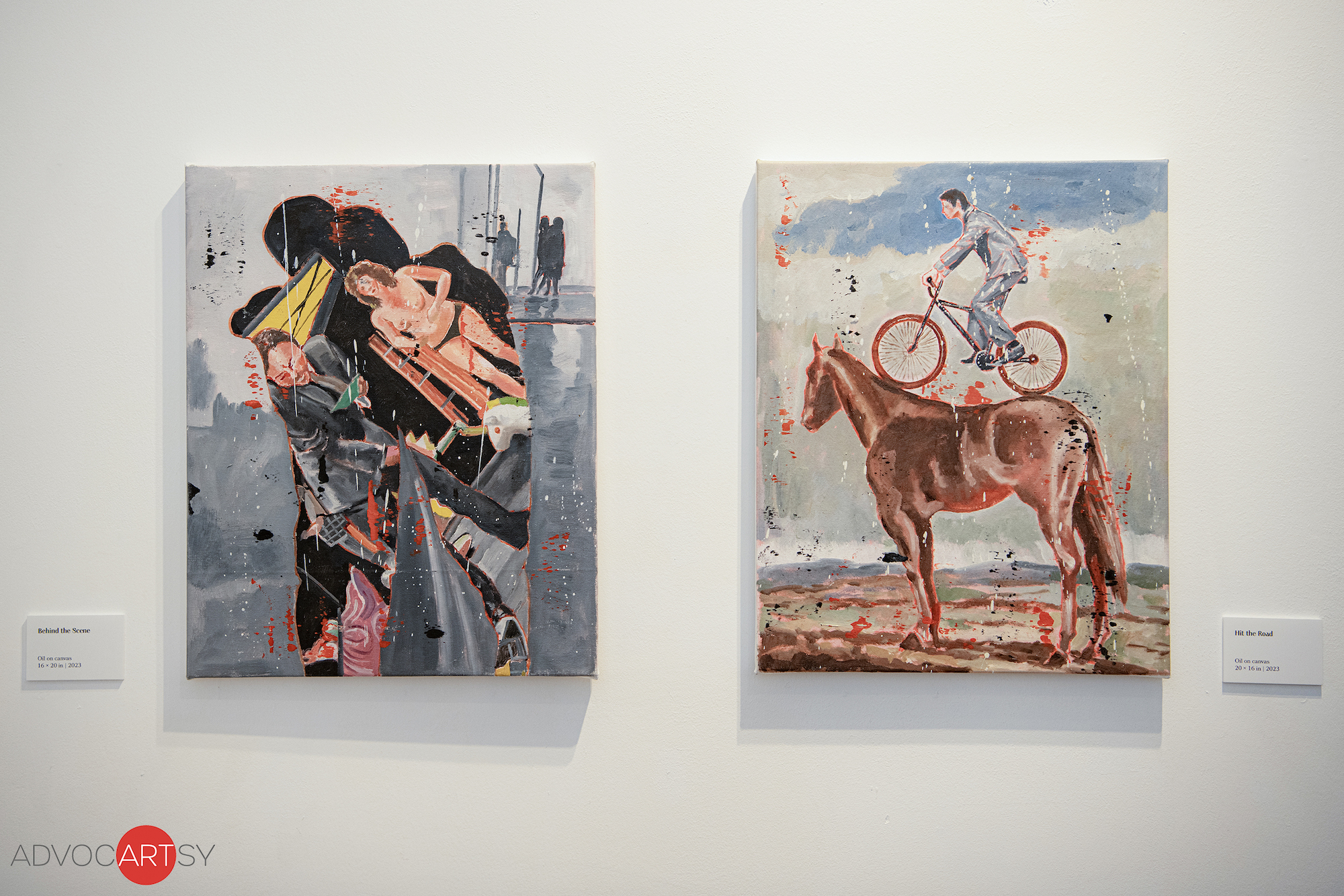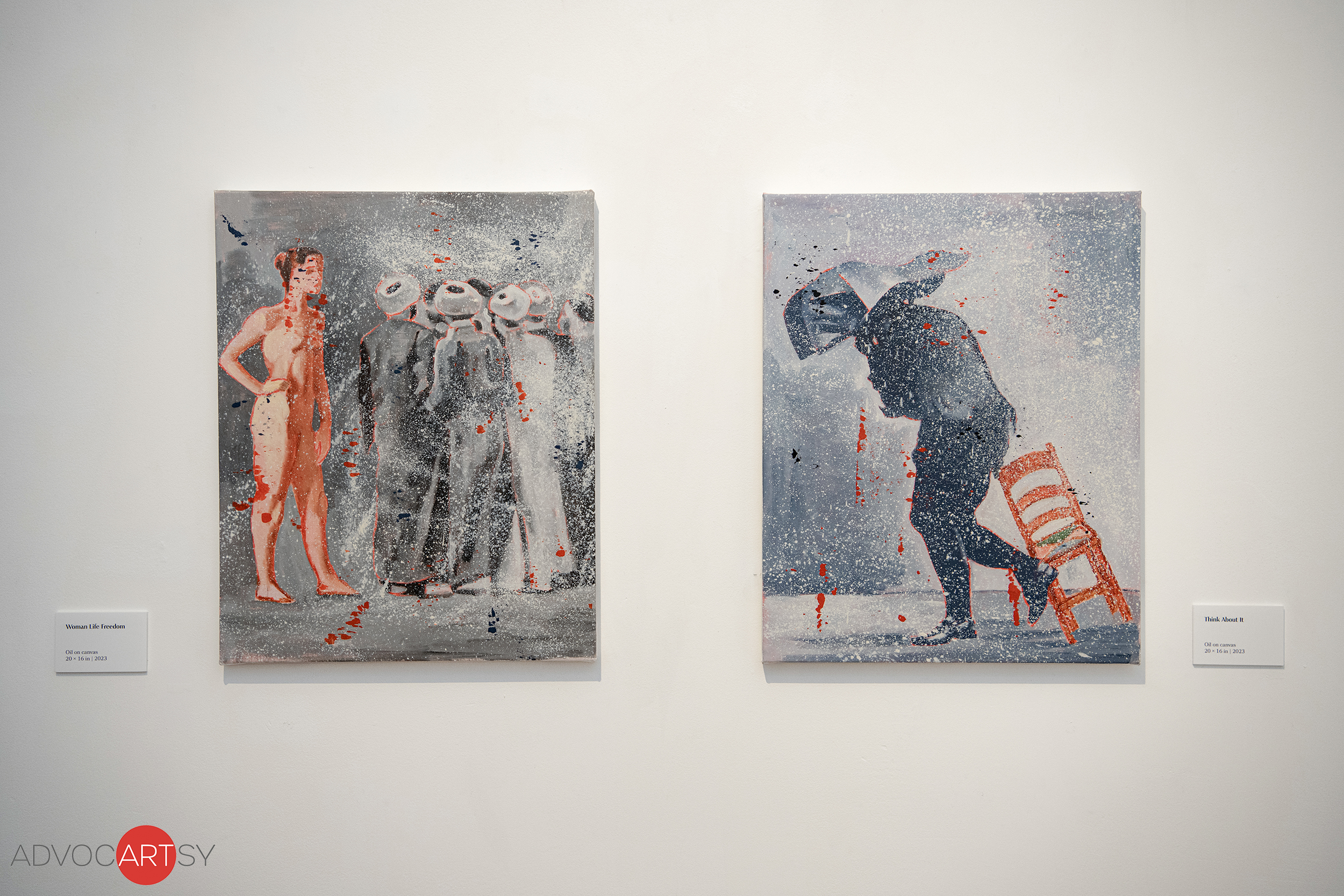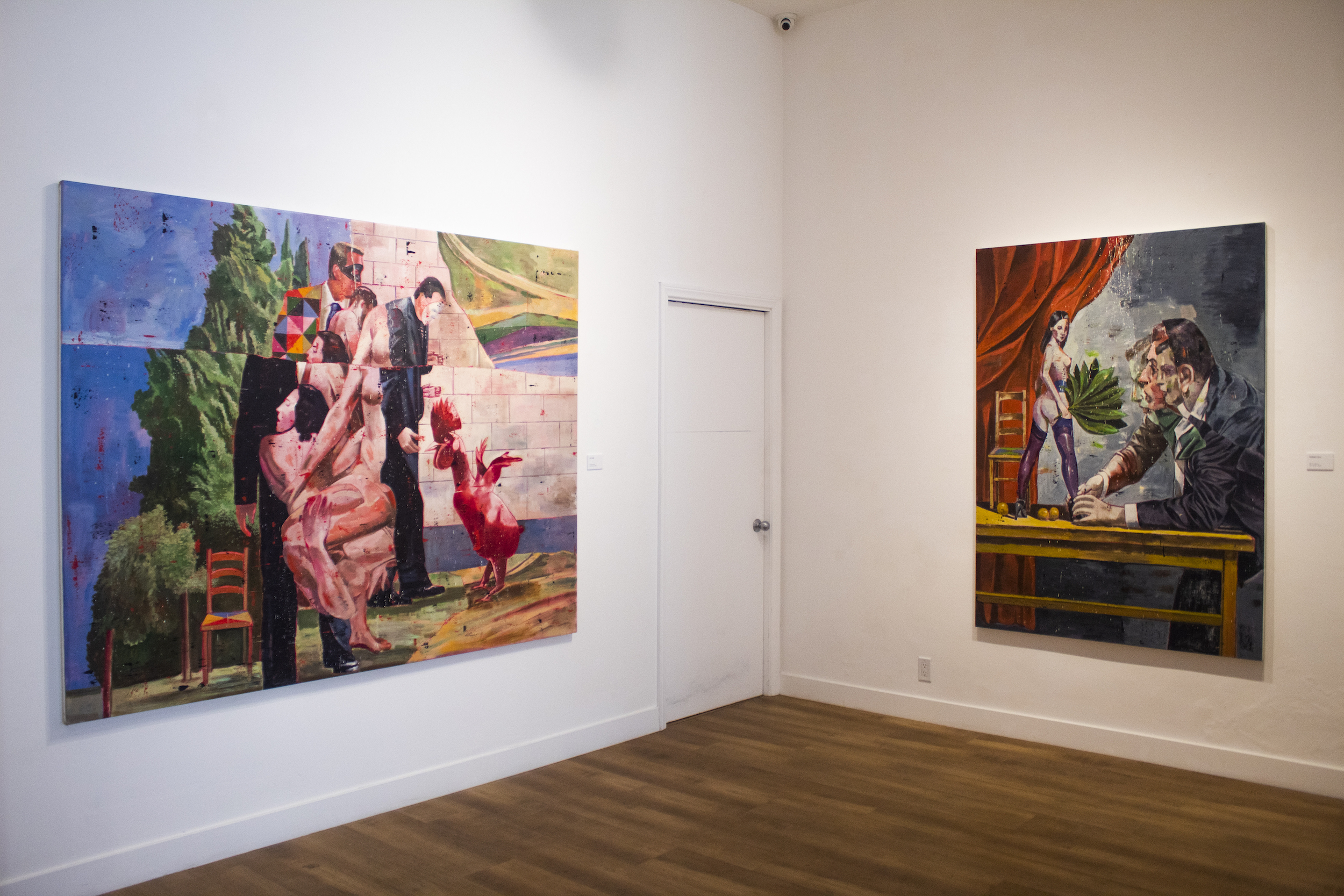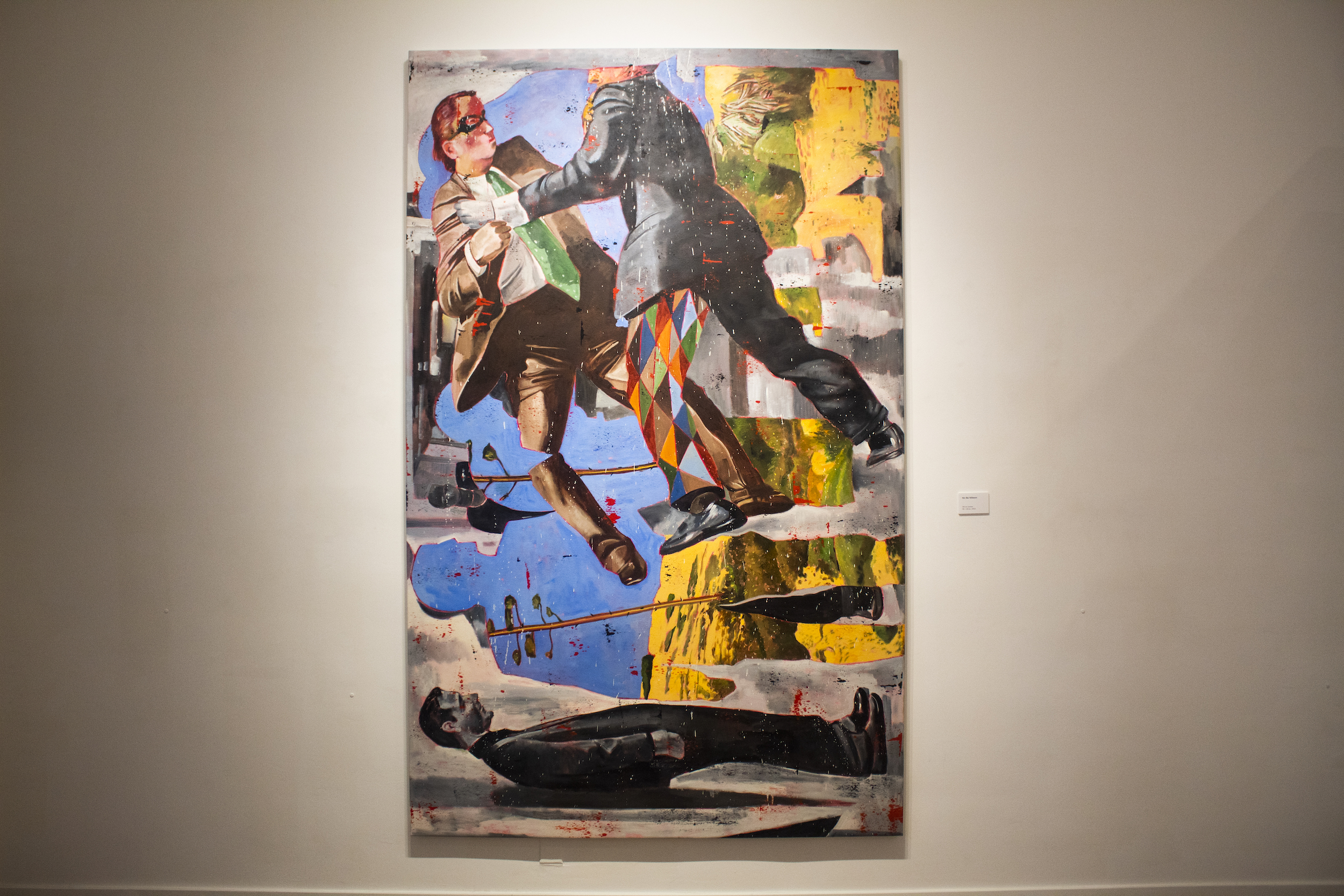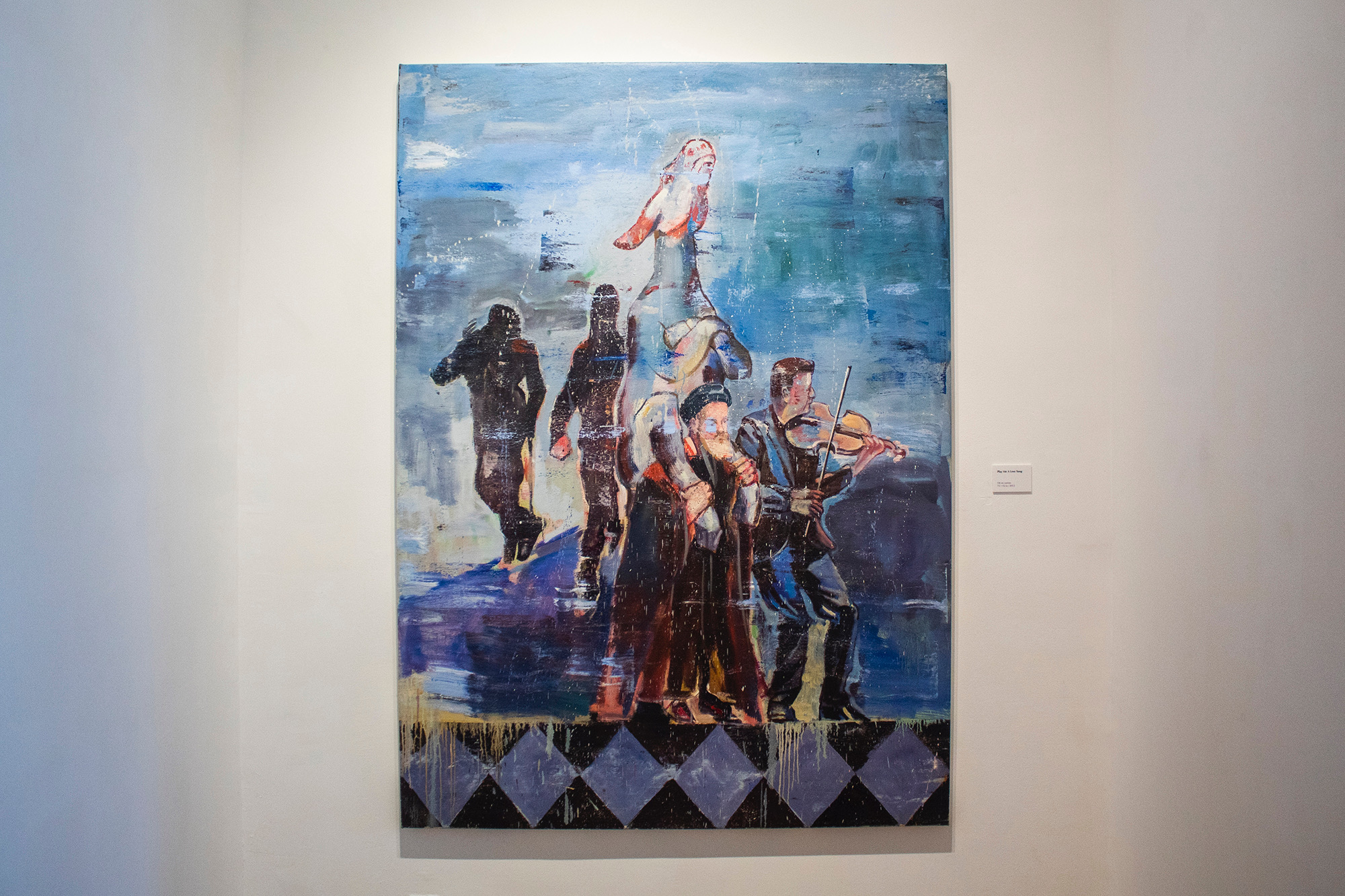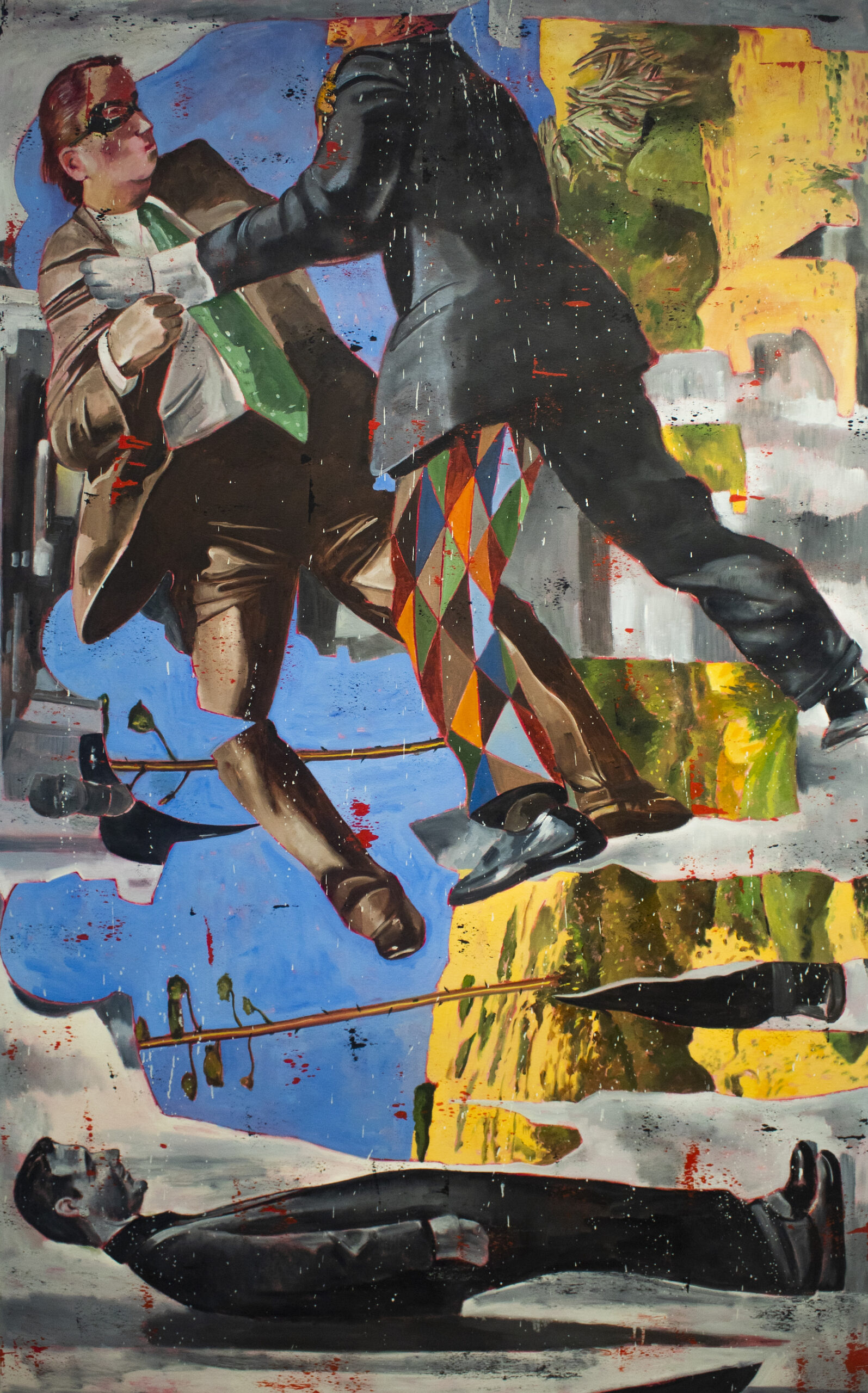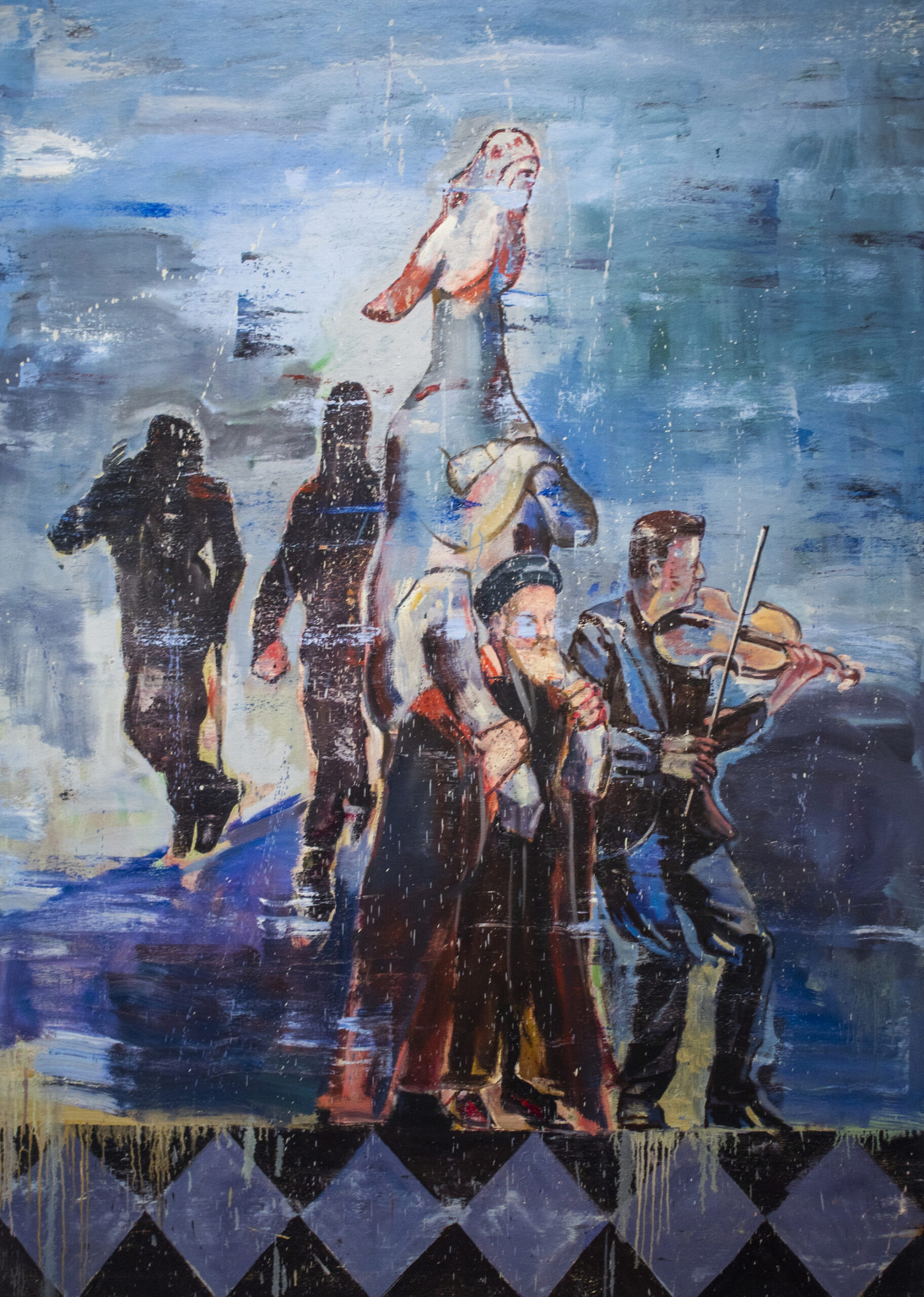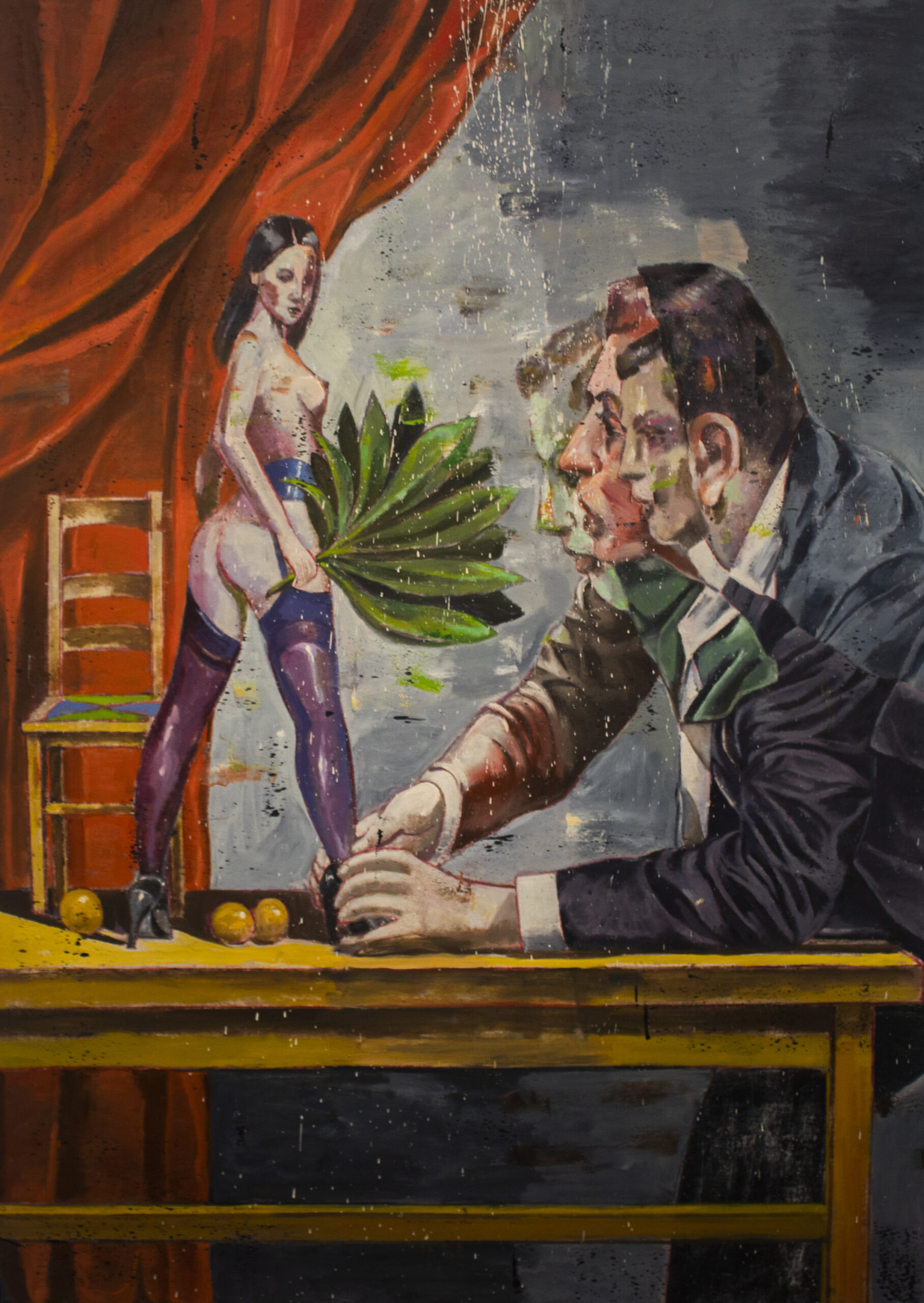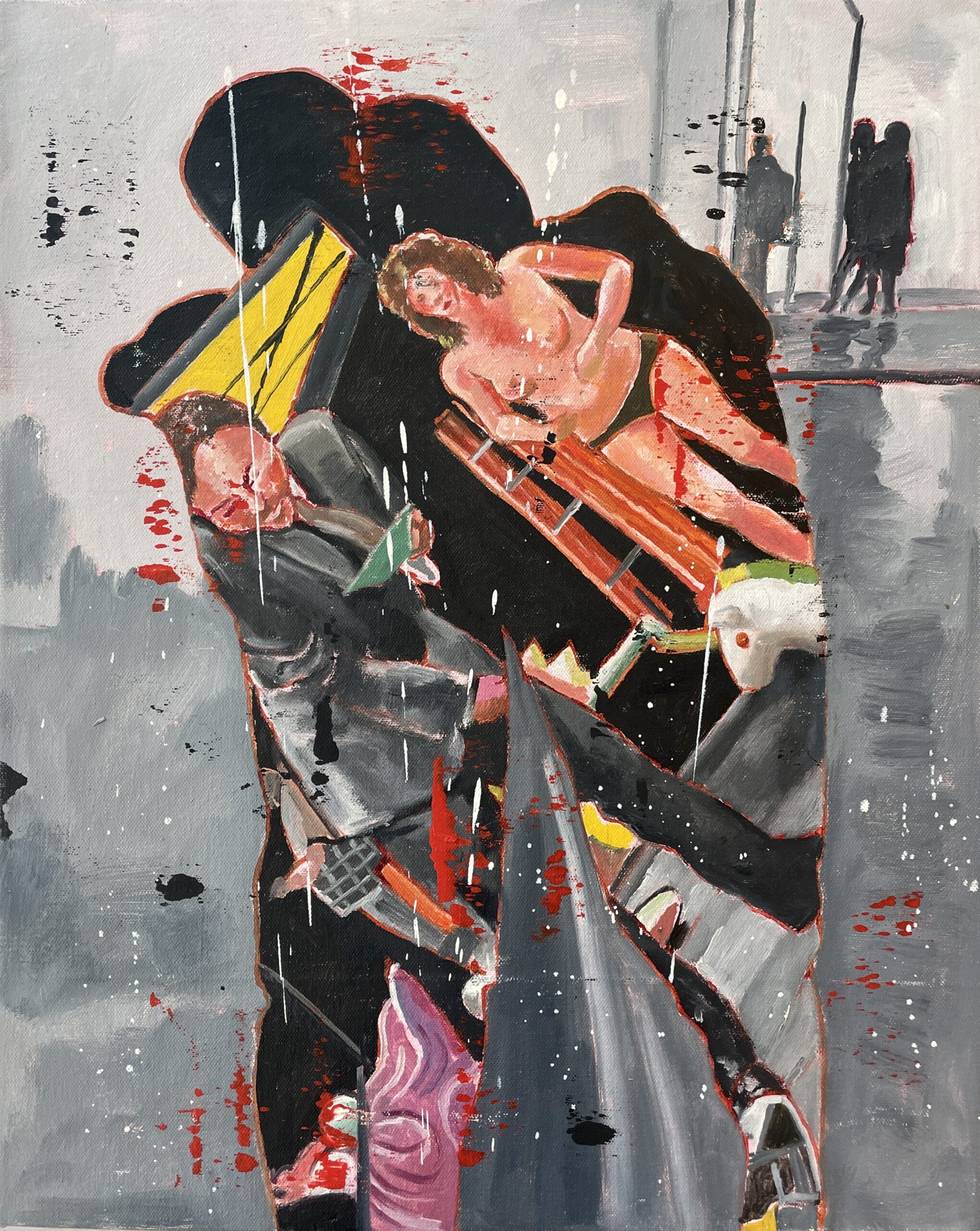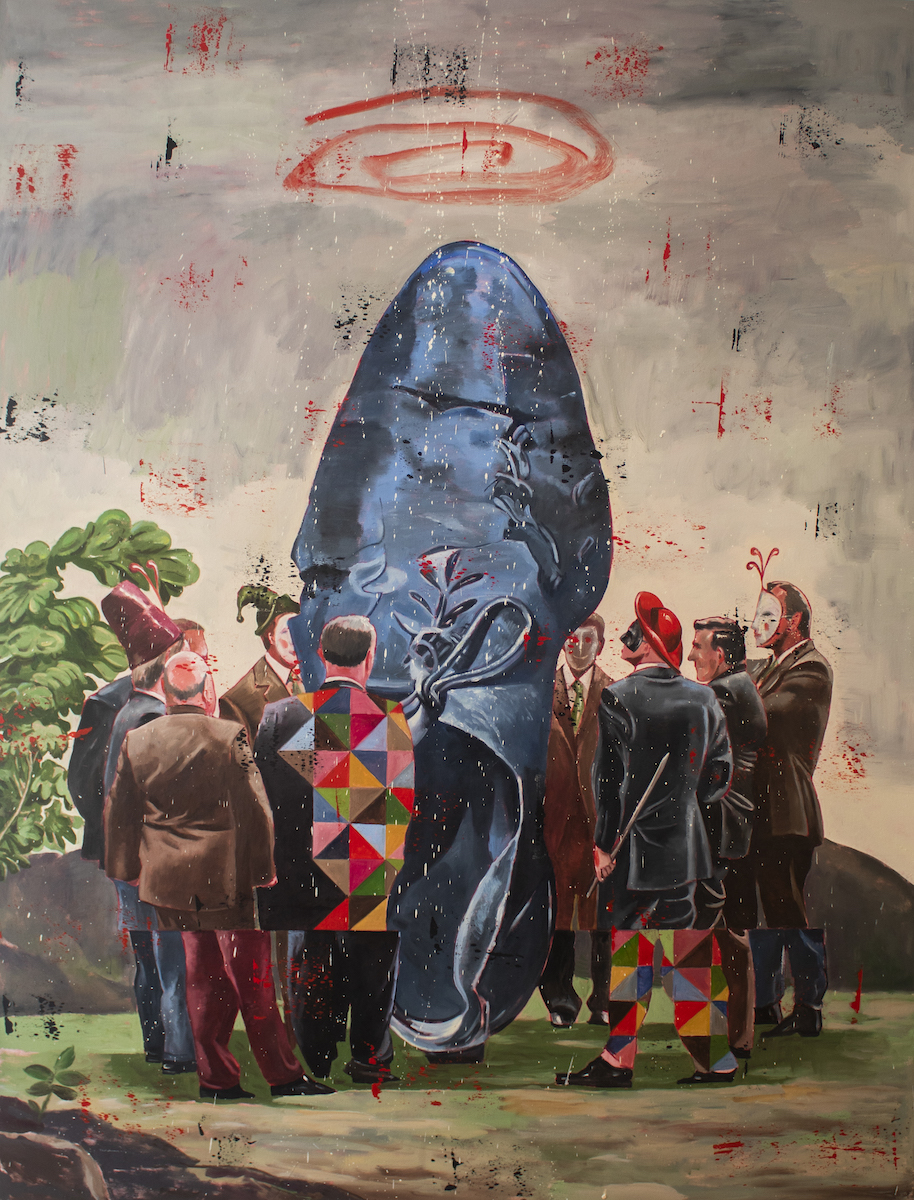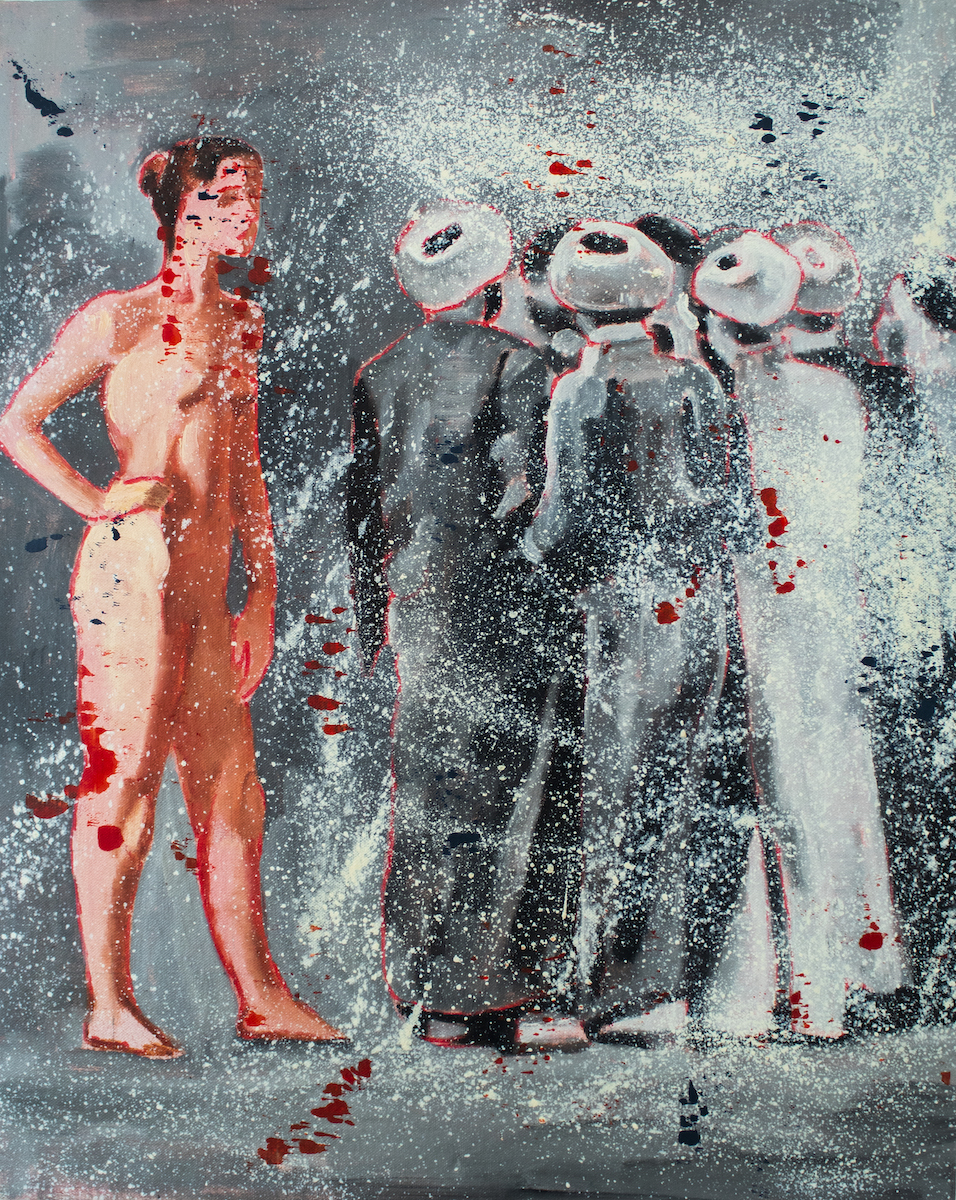About the Exhibition
Exhibiting 12 iconic works on canvas, Nodjoumi’s body of work has addressed the relationship between politics and power since the 1960s. Revolutionary in both spirit and practice, Nodjoumi’s paintings have driven social and political discourse across continents for five decades. In 2020, The New York Times listed Nodjoumi’s artwork among the 25 most influential pieces of protest art since World War II, citing his ability to critique both Iranian and American politics through satirical, sinister scenes rendered in monumental oil paintings.
Exhibition Statement
Since the beginning of his career as an artist in 1970s Tehran and New York, Nicky Nodjoumi has been a witness to the abuses of power and the resistance to those abuses. His early paintings are experimental and eclectic, successfully synthesizing New York School art tendencies, contemporary Iranian politics and Persian manuscript and wall painting traditions.
Going against current trends, Nodjoumi chose figuration instead of abstraction. Regarding his Western sources, Nodjoumi drew inspiration from Robert Rauschenberg, Jasper Johns, Francis Bacon and, more surprisingly, the early 20th century photographer of movement Edward Muybridge. This early hybrid style would leave traces in his mature works, as would his lifelong concern for human rights.
After a long period of gestation and formal experimentation, Nodjoumi re-emerged like a clap of thunder on the New York art scene in 2013. His ascent began with his curatorial collaboration with Shirin Neshat on the retrospective of Iranian political satirist Ardeshir Mohasses’ work at Asia Society Museum in New York in 2008. This was followed by his participation in Iran Modern, the first major survey of post-war Iranian art presented at Asia Society in 2013 and, in the same year, a solo show at the Taymour Grahne Gallery, both in New York City. His overtly political paintings were singled out for praise by the New York Times’ leading art critic Holland Cotter as “bruise-dark… emergency art. The sound of alarms still surrounds it”- perhaps the most eloquent and sensitive assessment of his works yet penned. (New York Times, October 17, 2013)
Nodjoumi’s signature style as it developed since that era is evidenced by the selection of large-scale masterfully painted works in this show, which covers the decade from 2012-2023. Both figural and political, subversive and surrealistic, the mature work now utilizes a cosmopolitan yet personal visual language drawn from myriad sources.
On one level, the works are rooted in the present, presenting dreamlike sequences of doom, ambivalence, irony and eroticism which evoke comparison with the 18th century Spanish master Francisco Goya’s 1799 masterwork, The Sleep of Reason Produces Monsters. Nodjoumi’s coded visual language complicates the viewer’s reading of his work as if both their execution and our perception take place under the watchful eye of the censor. The artist also uses humor to undercut the seriousness of his themes and constantly challenges the dominance and authority of his male figures with sarcasm. With Nodjoumi, the clown is never far from the surface and the circus band plays on. Stylistically, the artist both challenges and plays with his viewers. The division of the painting surface, the dislocated body parts, multiple viewpoints and the use of transparency are all deliberate strategies used to disorient the audience.
In some scenes, black-clad, masked male figures and coldly erotic female nudes enact mysterious ceremonies not unlike scenes from Stanley Kubrick’s 1999 film Eyes Wide Shut. In others, struggles for power and dominance are visualized by phantasmagoric scenes of corporate and religious figures fighting mano a mano, marching, struggling unsuccessfully to contain blazing fires or enacting mysterious rituals around symbolic dreamlike objects from Nodjoumi’s subconscious such as chairs or a giant shoe.
On another level, the title We The Witnesses, bears a powerful message resonant with ancient Iranian cultural and religious traditions and evokes the artist’s earlier interest in the figure of Mani as artist, martyr and symbol of dissent. The concept of Shahid– witnessing- is rooted in Shiite religious practices and in the yearly commemoration of the 7th c Battle of Kerbela, the major site of Shiite martyrdom. The sense that we are all, if not martyrs, then witnesses to their suffering and bravery is a compelling one in face of the events in Iran in 2022.
However, the present is never far from the artist’s mind and two works from 2023 evoke the Zan, Zendegi, Azadi movement: in the first, a nude woman boldly challenges the long-robed clerics as they turn their backs on her. The second painting of a hooded man and overturned chair evokes universal imagery of torture yet also the very specific tragic current circumstances of the numerous political prisoners in Iran.
To conclude, Nodjoumi has always been an activist and a rebel. In this series, he appropriates Shiite terminology central to the Islamic regime in Iran and transforms its meaning completely into a battle cry against all forms of oppression. The power of his works lies in their ability to transcend the local and achieve a universal significance.
Layla S. Diba
Select Artworks
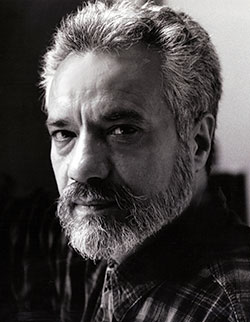
Artist Biography
Nicky Nodjoumi
Brooklyn-based artist Nicky Nodjoumi was born in Kermanshah, Iran in 1942. After earning a Bachelor’s degree in Art from Tehran University of Fine Arts, Nodjoumi relocated to the United States in the late 1960s, where he received his Master’s degree in Fine Arts from The City College of New York in 1974. Returning to Tehran to join the faculty of his alma mater, Nodjoumi continued the journey of political engagement that has been foundational to his work across decades. He began designing political posters inspired by the revolutionary spirit sweeping the country, only to be exiled once more in the aftermath of the 1979 revolution.
Nodjoumi’s political engagement has continued to the present day. His nuanced figurative paintings engage in political discourse with a light, satirical touch, layering his personal heritage and lived experiences in Iran and the United States into scenes that resonate beyond specific contexts or geographical boundaries. Nodjoumi’s works are conceived as theatrical stages where compositions of figures both serious and ridiculous, in the words of Phong Bui, “house meanings without irony, narratives without stories, humor without morality, above all creating a space that heightens the awareness of old and new history.” Serious in subject matter and witty in execution, these rich and diverse characters enliven Nodjoumi’s narratives and allude to collective experiences underpinned by sociopolitical struggles, articulating the full spectrum of feelings from aggression to victimhood.
Nicky Nodjoumi’s works are in several prominent institutional collections worldwide, including the Metropolitan Museum of Art in New York, the British Museum in London, Guggenheim Museum in Abu Dhabi, the DePaul Art Museum in Chicago, and the National Museum of Cuba. The artist lives and works in Brooklyn.

